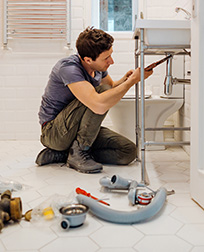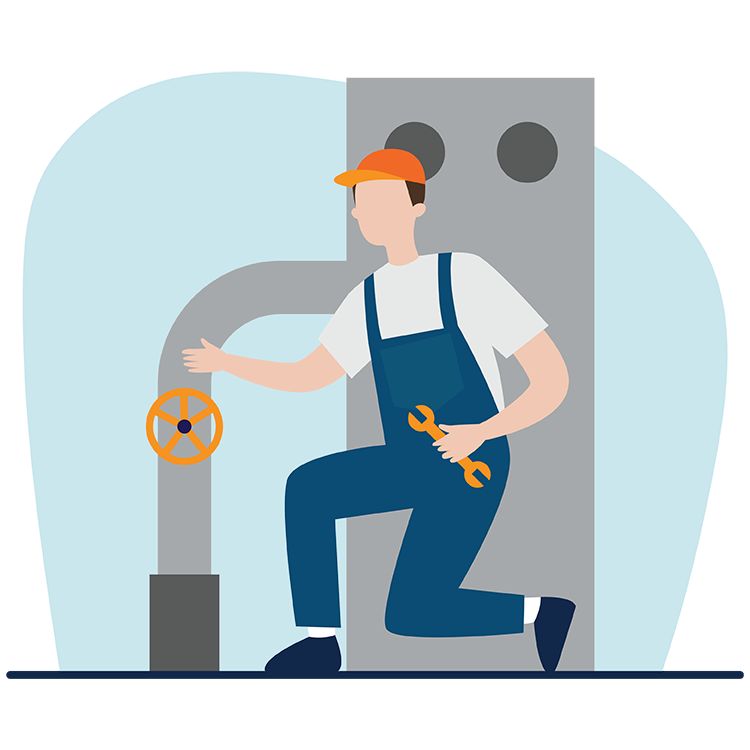Reliable Plumber Alabaster AL for All Your Emergency Requirements
Wiki Article
A Detailed Guide to Reliable Hot Water Heater Installment for Optimal Efficiency
Getting started on the job of installing a water heating unit is a venture that demands accuracy and an organized method for attaining optimum performance. As you continue, the details of linking water supply lines and setting up dependable electrical or gas connections wait for, promising insights right into guaranteeing efficiency and dependability.Choosing the Right Water Heating System

Next, consider the size and ability of the water heater. It's vital to evaluate your household's hot water requirements, which can differ based upon the number of passengers and their use patterns. A system that's as well tiny might cause insufficient warm water, while an oversized model may cause unnecessary power usage.
Performance scores likewise play an essential role in option. Look for hot water heater with high Energy Aspect (EF) ratings, suggesting premium efficiency and minimized power usage. Tankless designs, though typically more pricey ahead of time, deal substantial energy cost savings over time due to their on-demand heating capabilities.
Preparing the Installment Area
Before mounting a brand-new water heater, precise preparation of the installation area is essential. It's vital to measure the space meticulously to fit the water heating system's dimensions, ensuring appropriate clearance around the device for reliable procedure and maintenance.Following, eliminate any kind of particles, dust, or obstructions from the site to develop a tidy setting. Examine the flooring for stability, as the hot water heater will certainly need a solid, level surface to operate successfully. If necessary, mount a drip pan underneath the device to capture possible leaks or spills, avoiding water damage to the surrounding area. In areas vulnerable to seismic activity, take into consideration installing seismic bands to safeguard the heating system strongly in position.
In addition, ensure that all essential tools and materials get on hand prior to starting the installation. This consists of items such as wrenches, screwdrivers, a level, and any type of added equipment needed for mounting and safeguarding the heating system. A well-prepared installment location establishes the structure for a successful hot water heater setup, enhancing efficiency and safety and security.
Connecting Water System Lines
When connecting water supply lines to your freshly installed water heating system, it is critical to guarantee that all connections are protected and leak-free to preserve reliable operation and protect against water damages. Begin by determining the chilly and hot water supply lines. The chilly water inlet is typically noted with a blue label or a "C", while the warm water electrical outlet is marked with a red tag or an "H".Usage flexible water heating unit adapters to assist in a much easier installment process. Prior to attaching the connectors, position a plumbing professional's tape around the threaded ends of the water heating unit's inlet and electrical outlet pipelines.
As soon as links remain in area, gradually switch on the major water supply valve. Check each link for leaks by visually inspecting and really feeling for dampness. Tighten up connections as required, and make sure the pressure safety valve is correctly set up, securing versus extreme stress accumulation.
Establishing Electrical or Gas Connections
Appropriately establishing the electrical or gas links for your hot water heater is a crucial action to make sure safe and effective operation. For electrical water heating systems, begin by confirming that the electrical circuit is suitable with the heating system's voltage and amperage requirements. Ensure the power supply is turned off at the circuit breaker to avoid accidents. Attach the electrical wires to the heater adhering to the supplier's electrical wiring representation. Generally, this includes linking the ground cable to the green terminal, and the remaining cables to their equivalent terminals, securing each with cord nuts.For gas hot water heater, safety and security is paramount. Confirm that the gas supply is off before continuing. Connect the gas line to the water heater making use of a versatile gas port, guaranteeing it is effectively threaded and secured with pipe joint compound or Teflon tape ideal for gas connections. Tighten the links with a wrench, taking care not to over-tighten (Drain Cleaning Alabaster AL).
As soon as links are made, original site inspect for any kind of prospective leakages. For gas lines, use a soapy water service to the joints; bubbles show a leak. For electric connections, confirm that all electrical wiring is secure and properly insulated, keeping conformity with local electrical codes.
Evaluating and Readjusting for Effectiveness
With the electrical and gas links securely in position, the next step is evaluating the operational performance of your water heater. Begin by thoroughly activating the water system and ensuring there are no leaks at any of the shutoffs or joints. Once verified, proceed to load the storage tank, focusing on the pressure and temperature setups. It is recommended to set the thermostat to a recommended temperature level of around 120 ° F(49 ° C) to stabilize power performance and comfort.Following, do an extensive inspection to ensure the heating components or burner are working appropriately. For electric heaters, utilize a multimeter to confirm if the elements are drawing the proper existing. In gas versions, observe the heater fire; it needs to be stable and blue, suggesting effective burning.
Change the settings as essential to eliminate ineffectiveness. Take into consideration applying insulation actions, such as adding a hot water heater covering, to additionally boost efficiency by decreasing warmth loss. Furthermore, inspect the anode pole's problem, as a shabby rod can decrease effectiveness and result in storage tank deterioration.
Final Thought
Reliable water heating unit setup is important for making sure optimal performance and power savings. Firmly connecting water supply lines and carefully establishing up electric or gas connections lessen potential problems.
Correctly establishing up the electric or gas links for your water heating unit is an important step to guarantee reliable and risk-free operation. For electric water heating units, begin by verifying that the electric circuit is compatible with the heating unit's voltage and amperage requirements. Connect the gas line to the water heating system making use of a versatile gas connector, ensuring visit homepage it is correctly threaded and sealed with pipeline joint compound or Teflon tape ideal for gas connections.
Report this wiki page